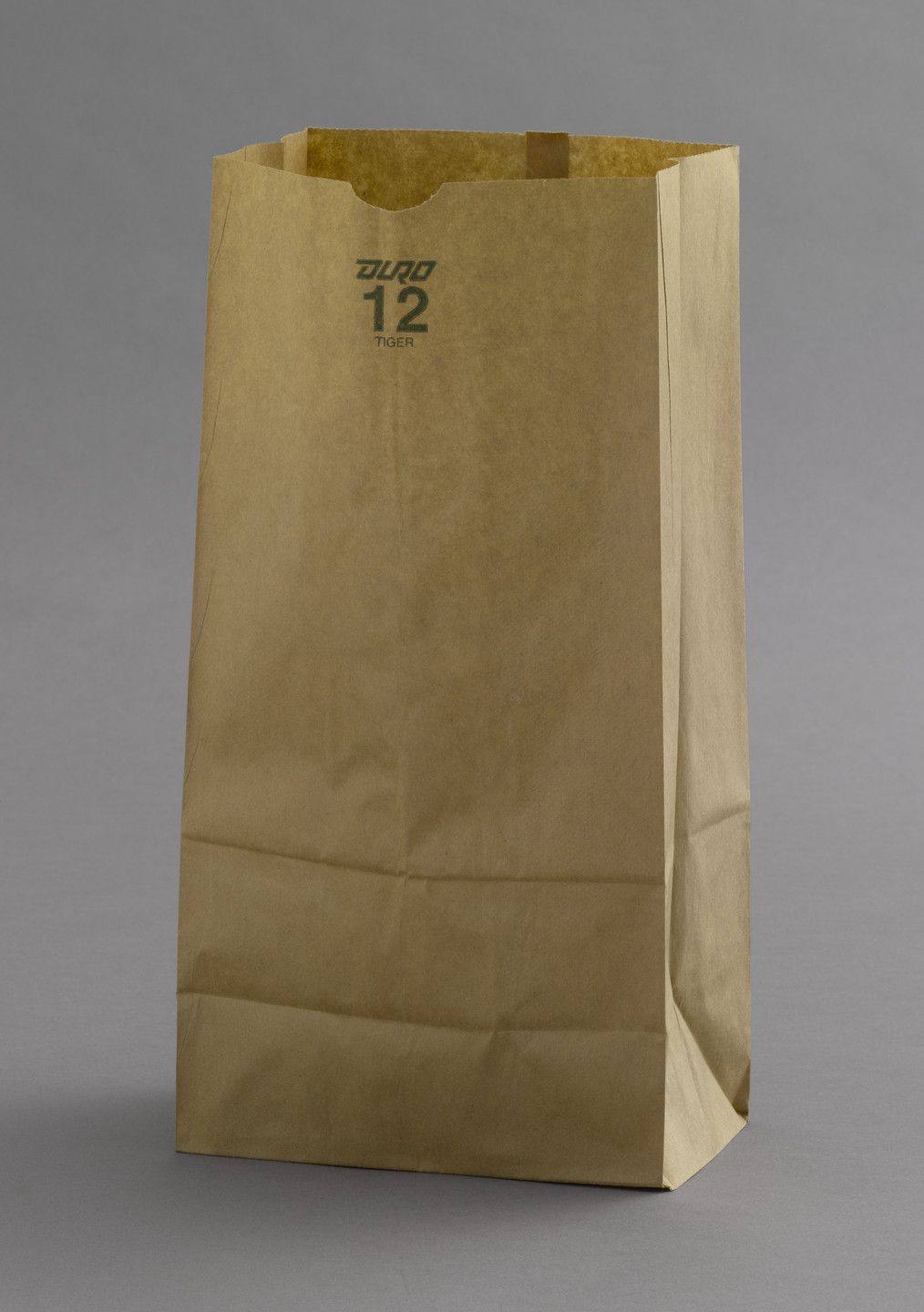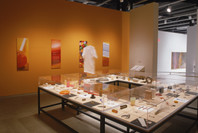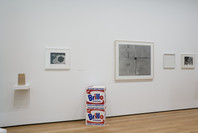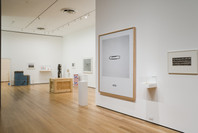Industrial production greatly increased the speed at which raw materials were converted into consumer goods. This pursuit of efficiency even extended to the final stage of a product’s journey—its purchase by a consumer. Wright, for example, arranged Broadacre City’s layout of farms, factories, highways, and markets to enable goods to travel “from the maker to the consumer by the most direct route.” The design of the flat-bottomed paper bag offers a humbler contribution toward the streamlining of the purchasing process. Machine-made in standard sizes, the flat-bottomed bag, unlike earlier envelope-shaped versions, holds its shape while open, leaving both of a clerk’s hands free for the rapid packing of a customer’s products.
Gallery label from 2024
Many examples of good design have become so ubiquitous that we tend to gloss over the innovations they embody. Flat-bottomed grocery bags—humble objects incorporating design principles fundamental to the way we inhabit the modern world—are a case in point. The bag’s standardized, geometric form and economical use of materials are defining features of industrial production and distribution. The folded bag can be stored flat; when open, its groundbreaking flat bottom creates a sturdy, stable container. The use of paper, an organic and recyclable material, resonates strongly with contemporary environmental concerns.
An industrially produced object is the culmination of numerous small yet complex design decisions and can involve many different individuals as it progresses from concept to prototyping and then finally to manufacture and distribution on a mass scale. Details of this process are often difficult to unearth, particularly when the design is produced over a long period. For the flat-bottomed paper bag, however, legal documents lead us back to Knight, one of the first women to obtain a US patent, in 1871. Her patented machine produced flat-bottomed bags that were a great improvement on the earlier, structurally weaker envelope style. With only minor modifications, such bags remain in production today, making this one of the oldest and most enduring designs in the Museum’s collection.
Publication excerpt from MoMA Highlights: 375 Works from The Museum of Modern Art, New York (New York: The Museum of Modern Art, 2019)
Standardization—of bags, tins, and cupboards for food storage—was an early defining feature of the modern kitchen. Although the design of the flat–bottomed paper grocery bag as we know it today underwent numerous refinements, the principal innovation can be traced to Knight’s design of a bag machine patented in 1871. The flat bottoms were a great improvement on the earlier, structurally weaker envelope–style paper bag. This US patent was one of the first awarded to a woman.
Gallery label from Designing Modern Women 1890–1990, October 5, 2013–October 1, 2014.
The flat-bottomed paper bag, a seemingly uncomplicated object, is in fact the outcome of several iterations and innovations in both its design and mode of production. The first version of the paper bag, invented by Francis Wolle in the early 1850s, was an envelope-shaped bag, which was limited in terms of its durability and amount of interior space. In the 1870s Margaret Knight, who worked for the Columbia Paper Bag Company of Springfield, Massachusetts, designed a machine that could produce flat bags that could be unfolded to the square-bottomed paper bags we know today. The new flat-bottomed design could stand upright and had a larger capacity. In 1883 Charles Stilwell further developed Knight’s design for the bag by improving upon the machine used to produce them. The paper bag gained increased popularity because in addition to its usefulness as a container for goods, merchants could now use the bag as advertising by printing their logo and brand name on it.








